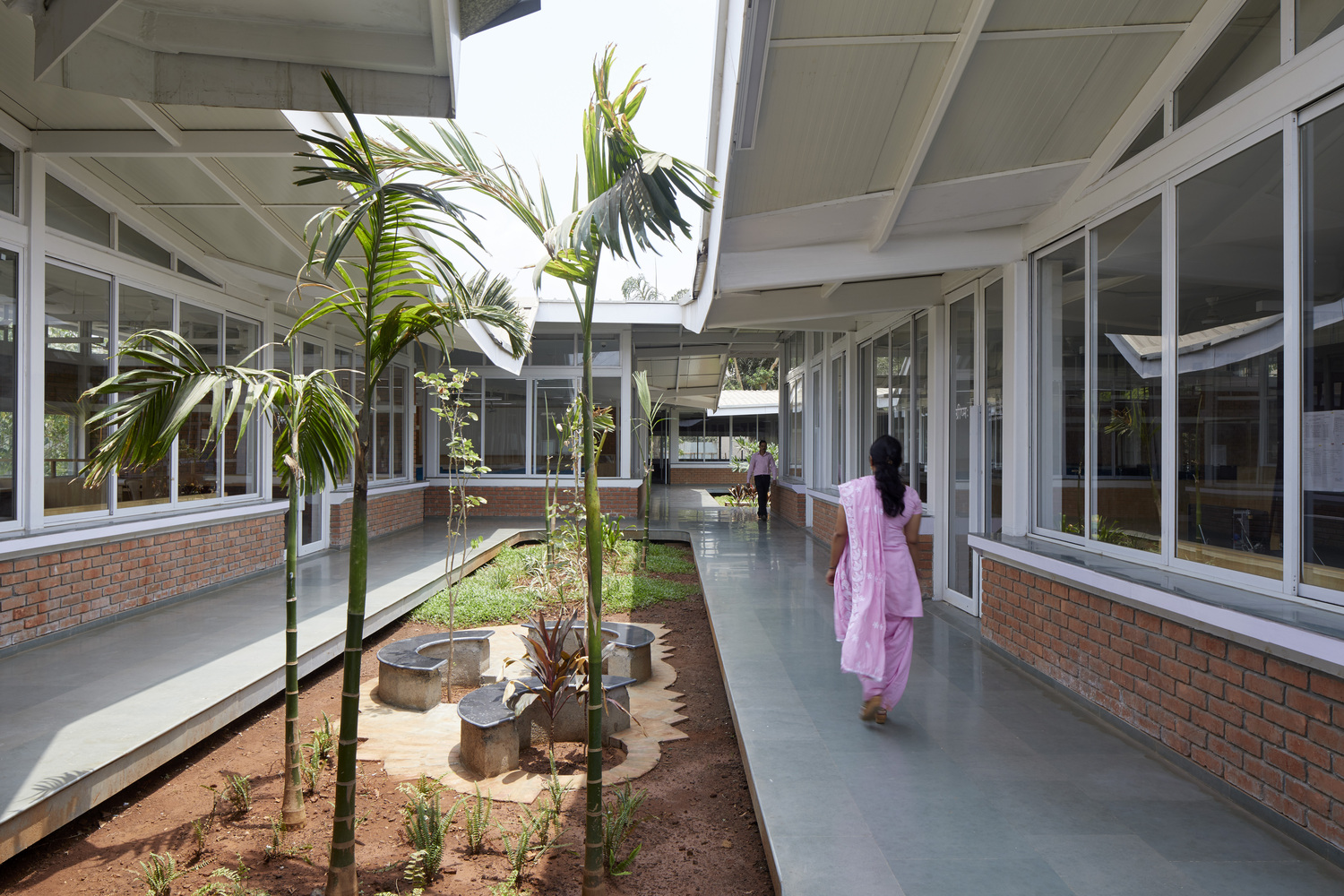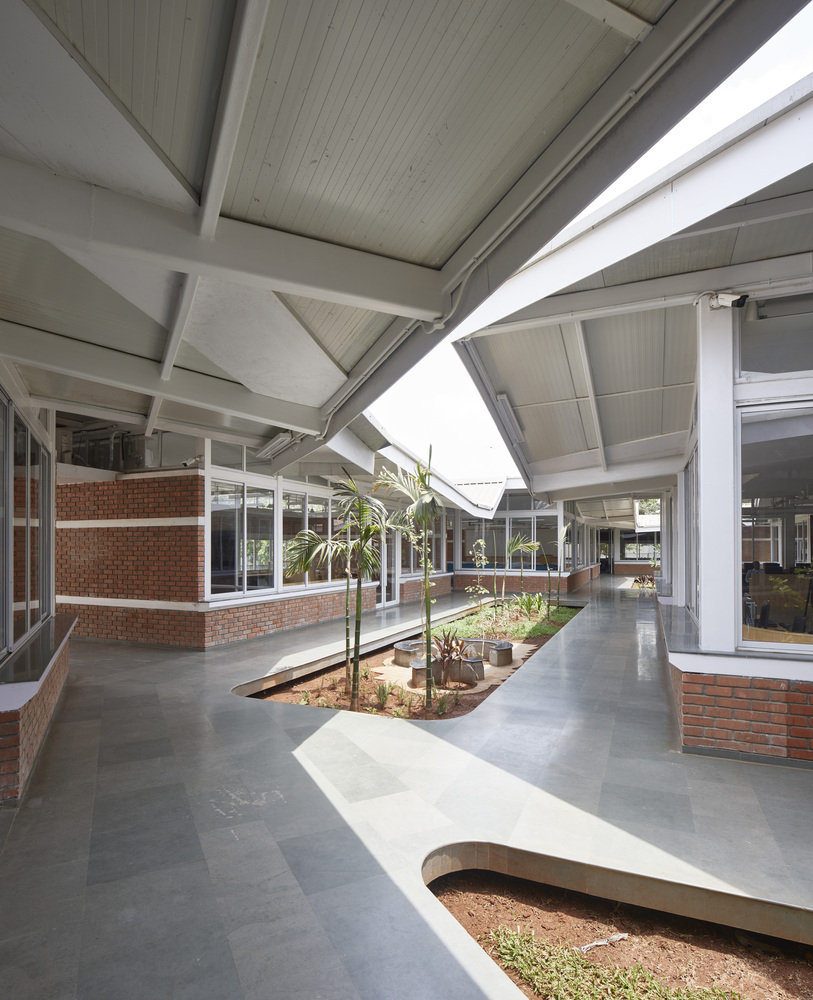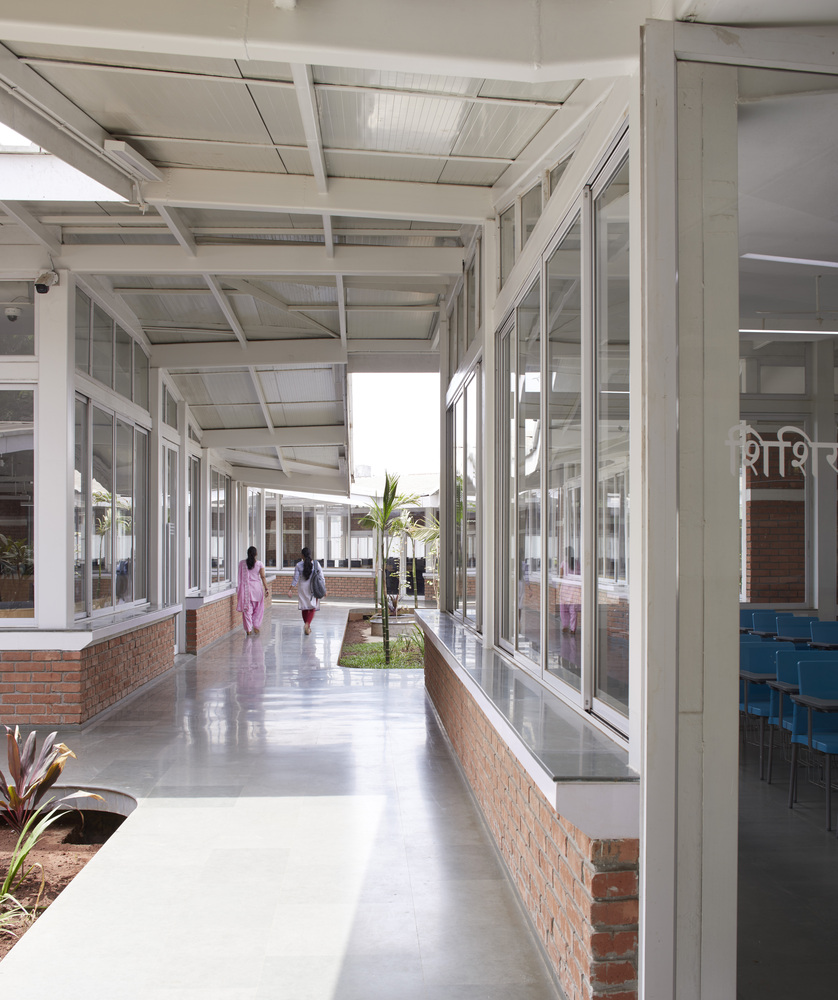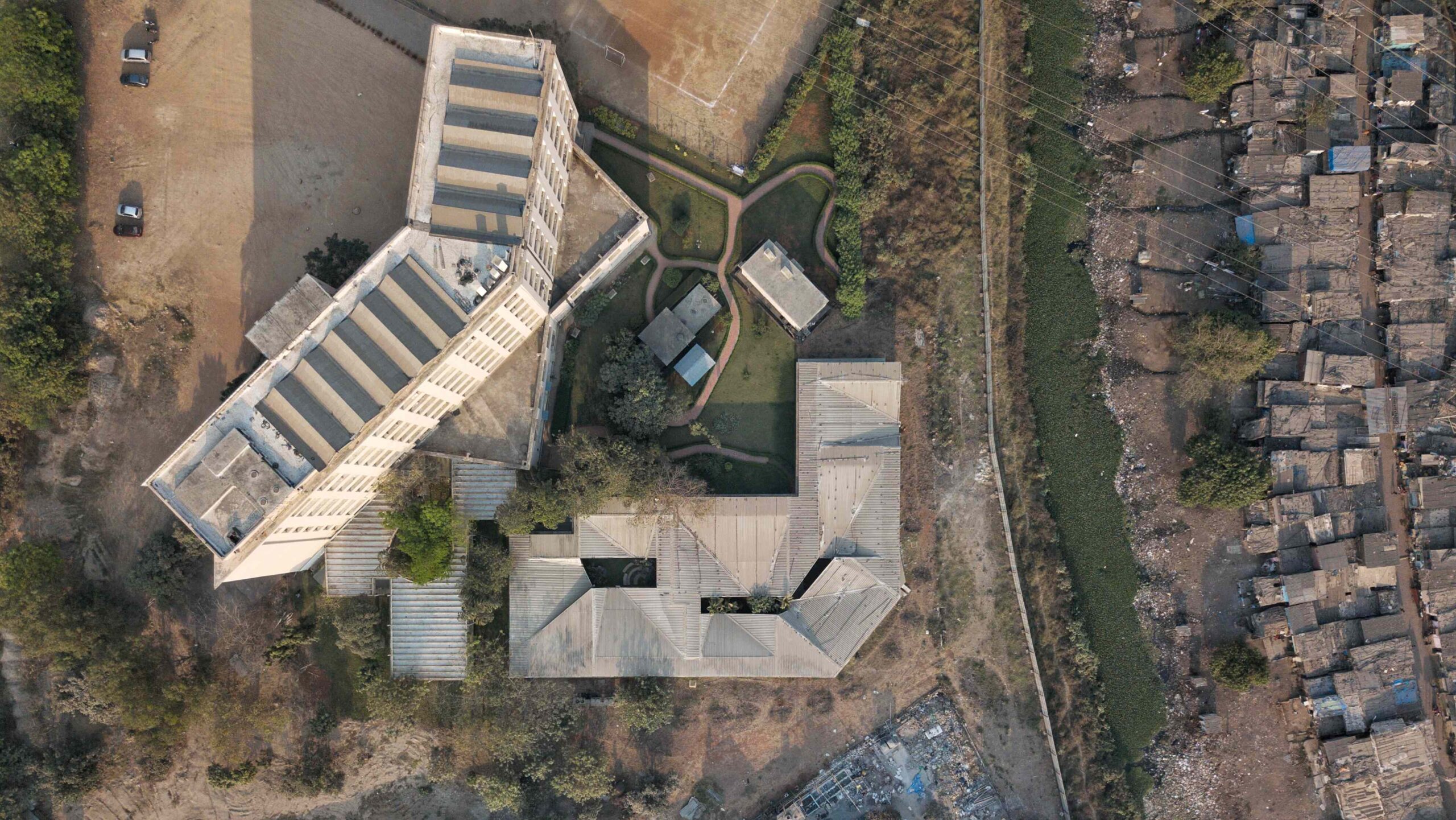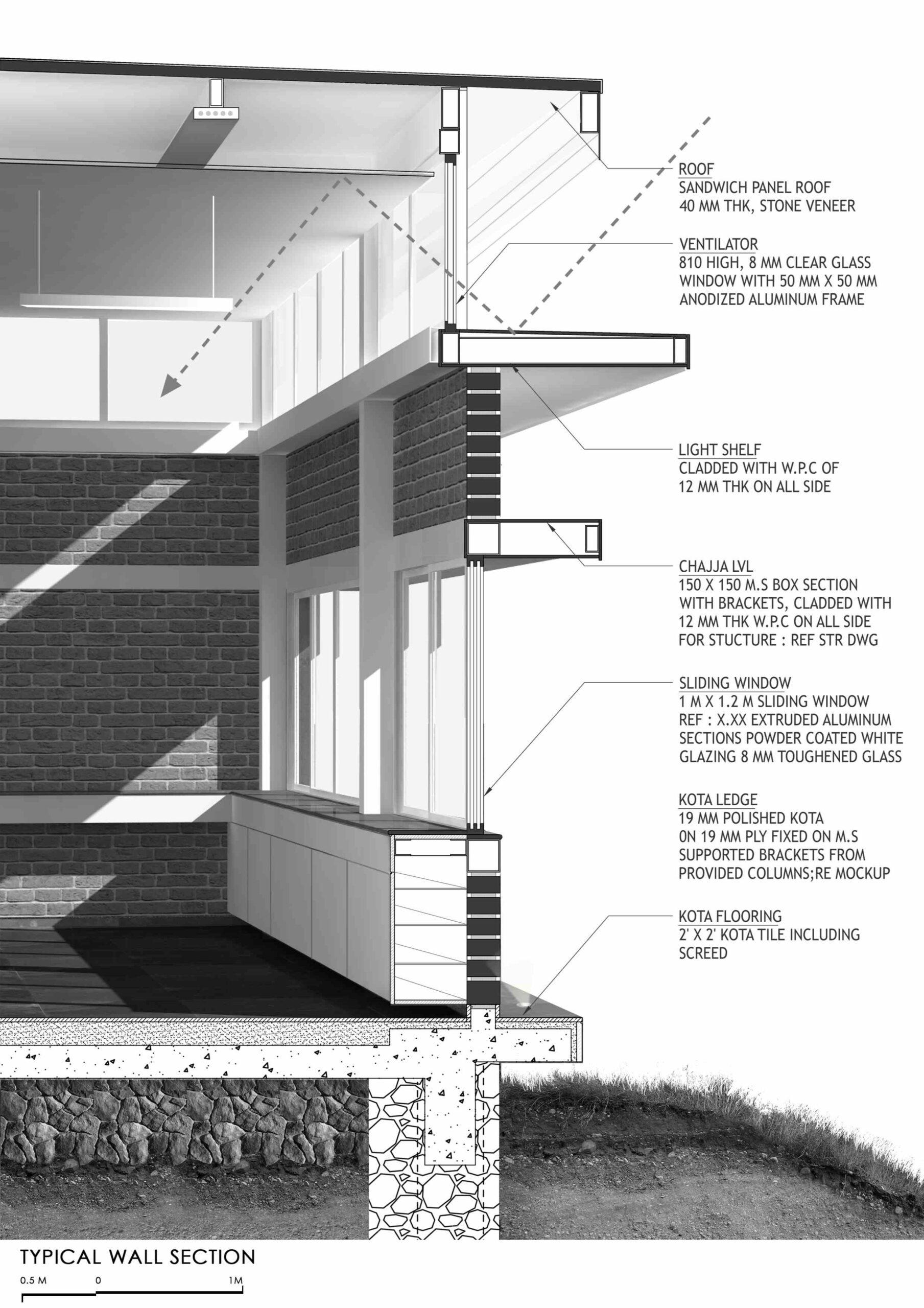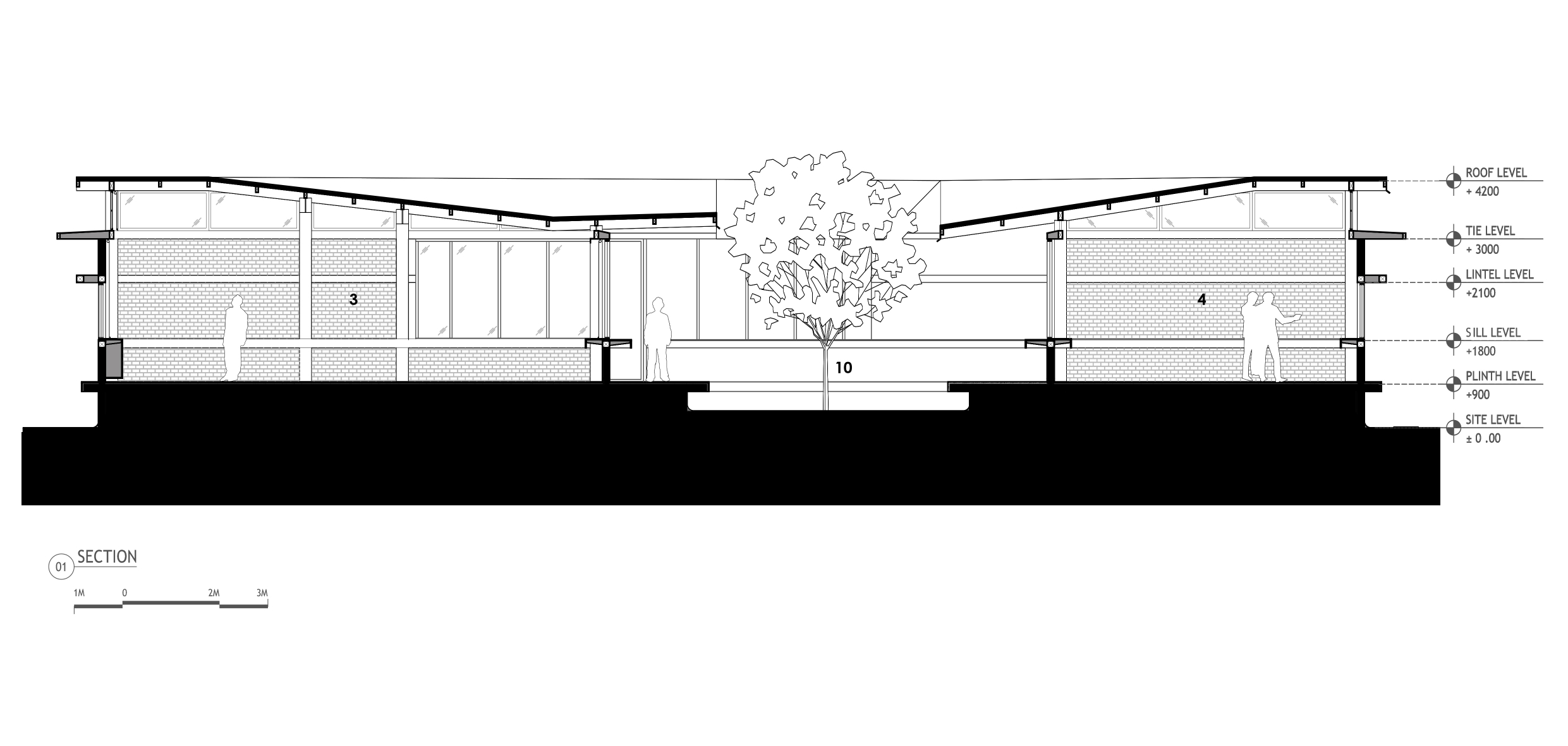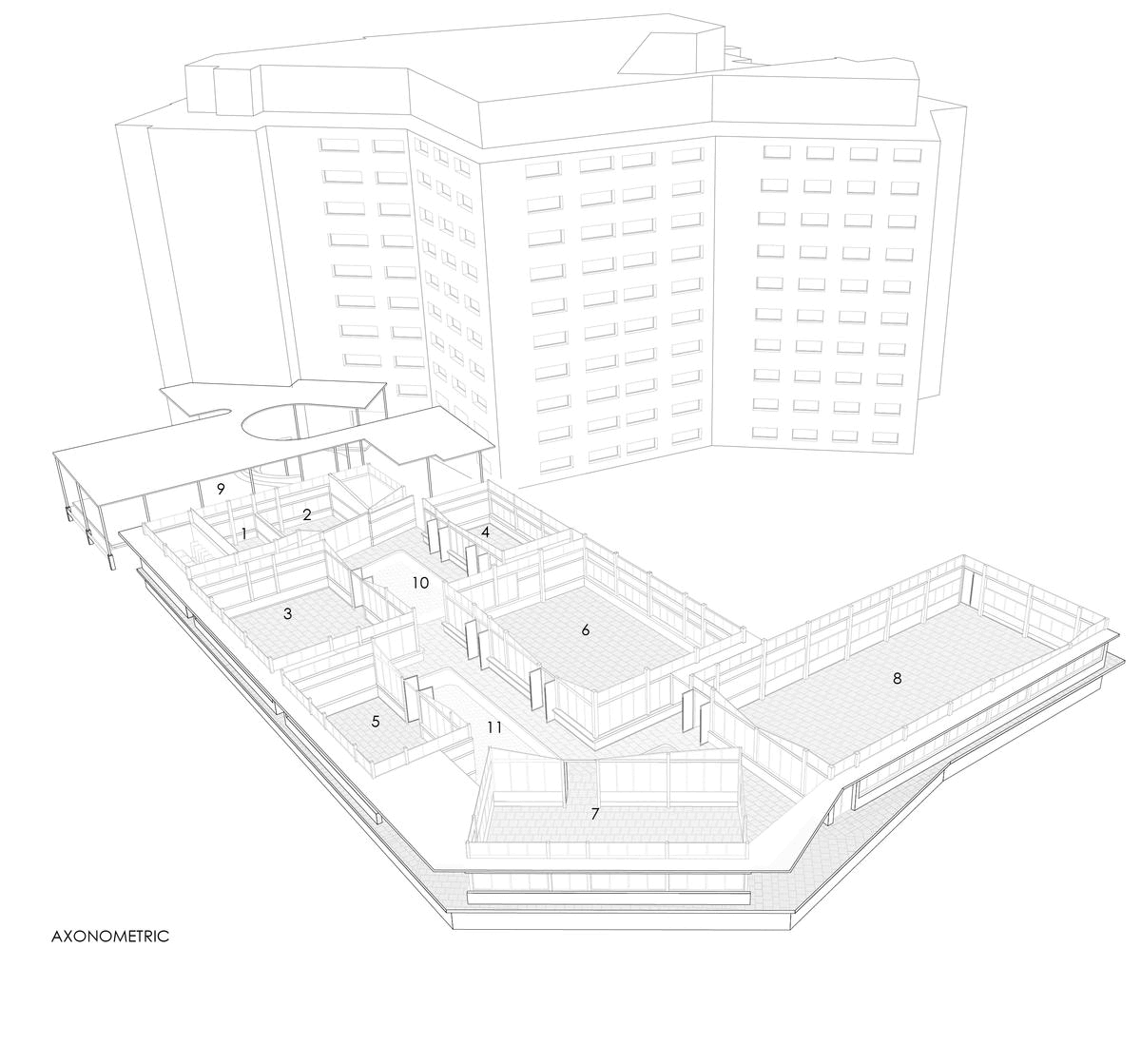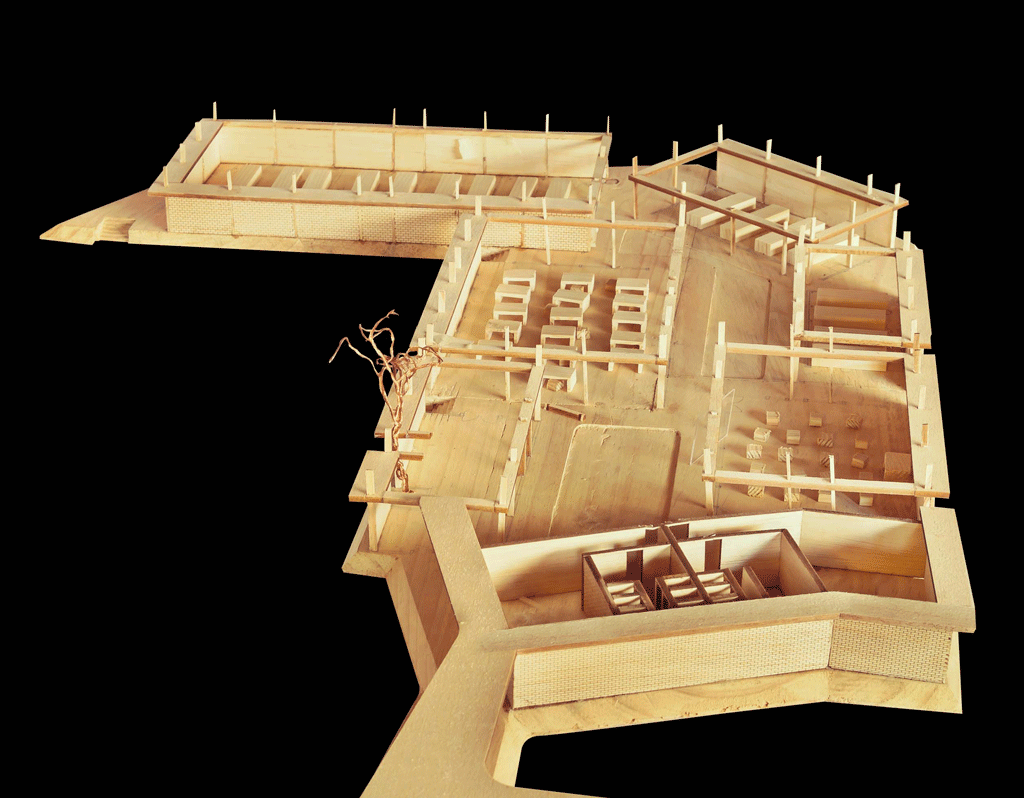The IT College building, an extension to the K.J. Somaiya Institute of Engineering in Mumbai, addresses a challenging site flanked by a cement plant and a contaminated rivulet. Raised on a plinth to combat monsoon flooding, it houses workshops, laboratories, lecture rooms, and student community spaces. Two courtyards anchor the design, with a veranda-like circulation spine promoting chance encounters and interaction. Visual connections between spaces foster a sense of collective learning. To optimize air circulation and minimize noise transfer, programs are designed without shared walls. The insulated roof features water gargoyles channeling rainwater into harvesting tanks, unifying the building’s distinct functions while addressing environmental concerns.
